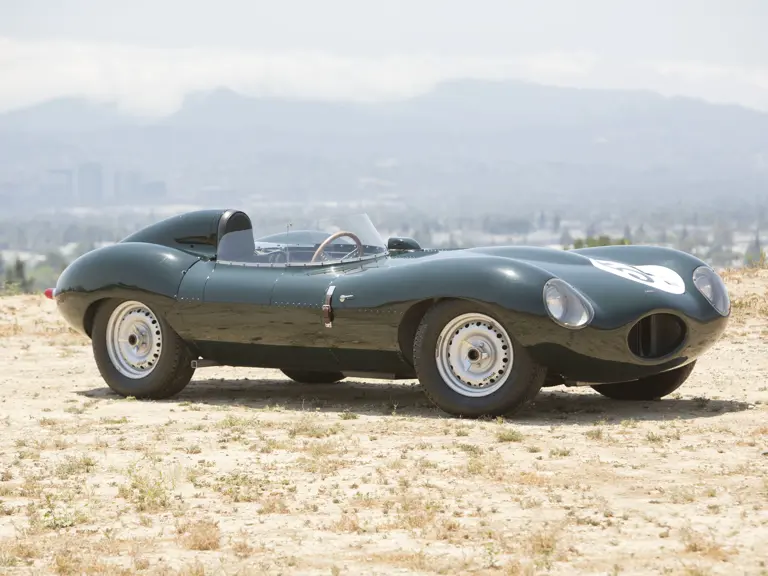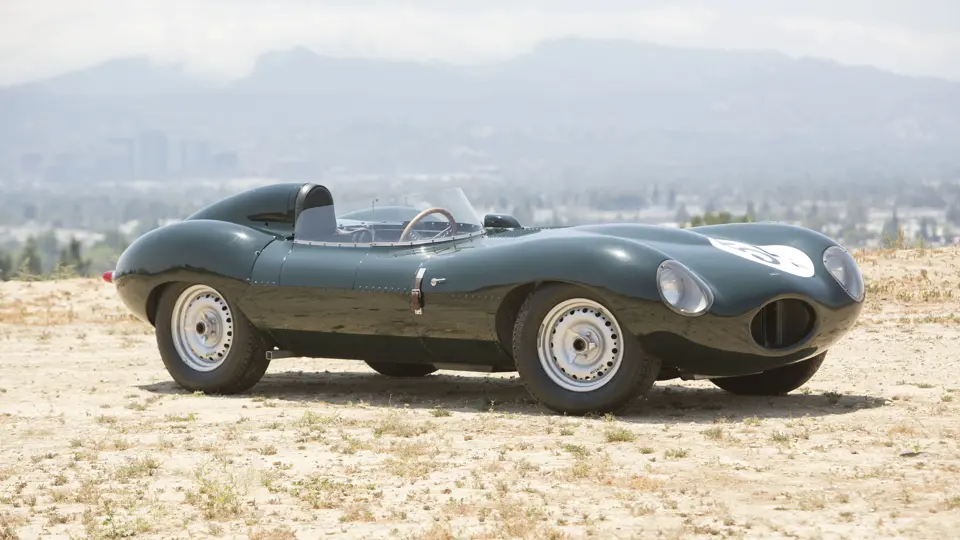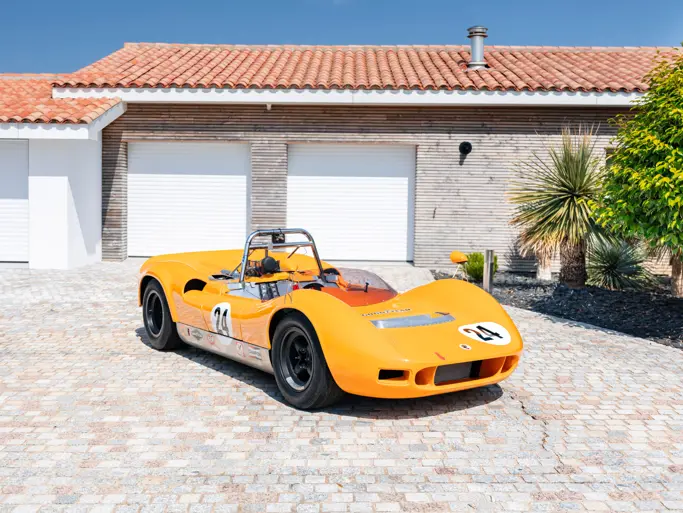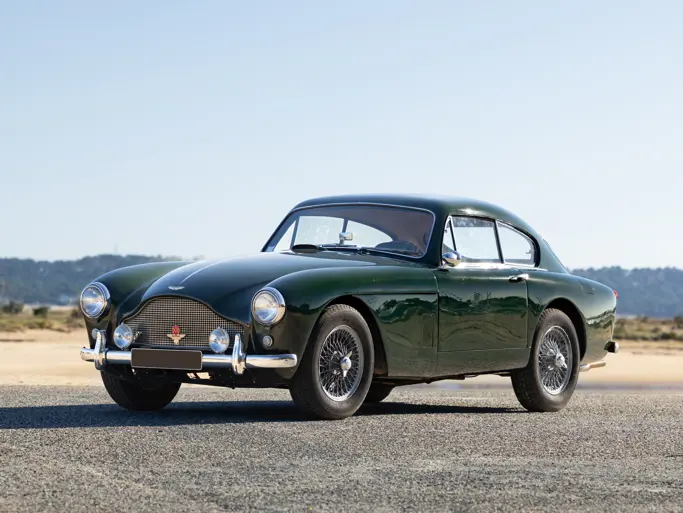The first monocoque Jaguar, the D-Type went into production in 1954. Its center section was built of aluminum and magnesium, but had a tube subframe for the engine, steering and suspension. The rear suspension was mounted to the body bulkhead. A monoposto design, the body was characterized by a short nose with horizontal front elevation, an oval opening for cooling air, and a huge fin extending rearward from the headrest. A racing evolution of the XK 120, the D-Type was available only to qualified race drivers.
The engine was a hotted-up version of the 3,442-cc XK 120 powerplant, with three Weber carburetors and a new cylinder head giving 9.0 to 1 compression. A special three-plate clutch was used and the gearbox was fully synchronized.
The D-Type was meant for racing, and race it did, winning LeMans in 1955, ’56 and ’57. In the U.S.A., Briggs Cunningham’s team won Sebring in 1955 with a factory car piloted by Mike Hawthorne and Phil Walters. After 1956, Jaguar went into a motor sports hiatus, and unfinished cars were given highway equipment and sold as road-going XK-SS models, the fastest street model offered by any manufacturer at the time.
D-Type production had continued, in very small numbers, into 1956. Most of them were driven hard, under competition conditions, so those that survived were often in compromised condition. Just 87 were built, so finding a genuine D-Type in acceptable condition has become very difficult. As a result, a cottage industry of replicators has developed, their brands including TWR, Realm, Tempero, Watson, Classic Autocraft and Lynx Motors. This car is one of the latter.
Lynx Motors, Ltd., of St. Leonards on Sea, East Sussex, UK, was founded by Roger Ludgate in 1968 as a repair and maintenance operation for racing cars. Applying more advanced engineering skills, Lynx Motors showed its first D-Type construction in 1974. It was an instant hit, and 41 have since been built, along with nine C-Type replicas. Recognized as one of the top-flight constructors, Lynx meticulously rebuilds every part salvaged from a donor car before installing it on their custom-built chassis.
This Lynx D-Type takes its power from a 4,235-cc engine from a Daimler Sovereign, an equivalent model to Jaguar’s 420. Carburetion comprises three 45DCOE152 Webers. It has a four-speed manual gearbox and four-wheel disc brakes. The color, of course, is British Racing Green.
The craftsmanship is very good, with excellent contours, paint and body alignment. The doors close with a satisfying “snick.” The single seat is soft black leather, with racing belts and shoulder harness. There are no other creature comforts. The car runs on correct Dunlop steel knock-off wheels, with Dunlop SP AquaJet ER70H15 tires.
Ideally, everyone would like to have a real D-Type Jaguar. Given the realities of supply, however, the replica route is much more attainable and affordable. Moreover, it is just as much fun.



 | Santa Monica, California
| Santa Monica, California


